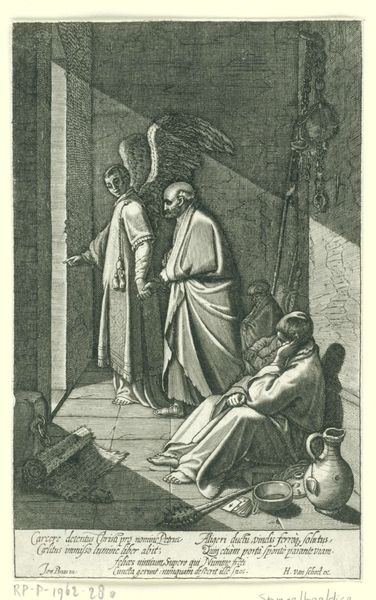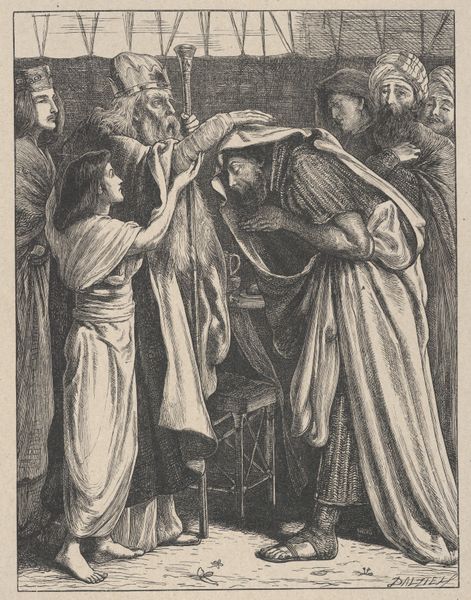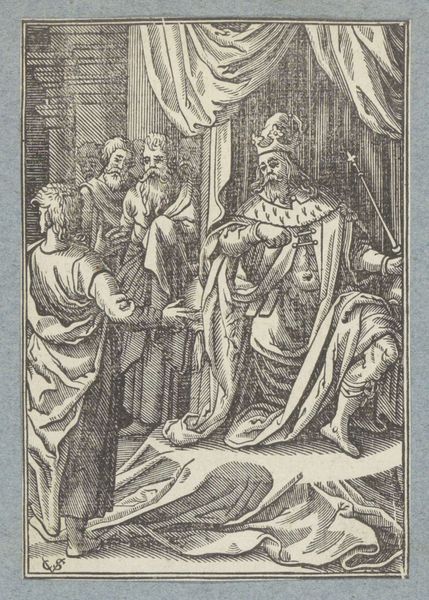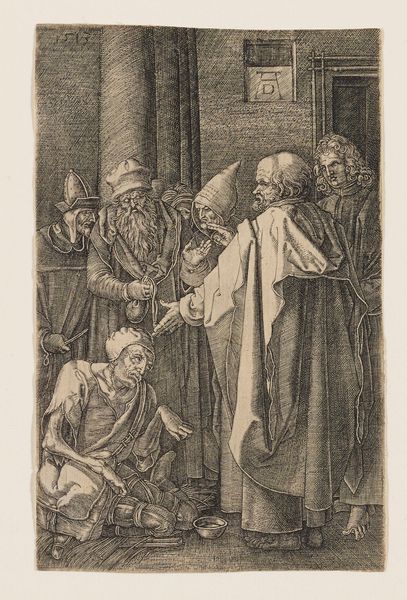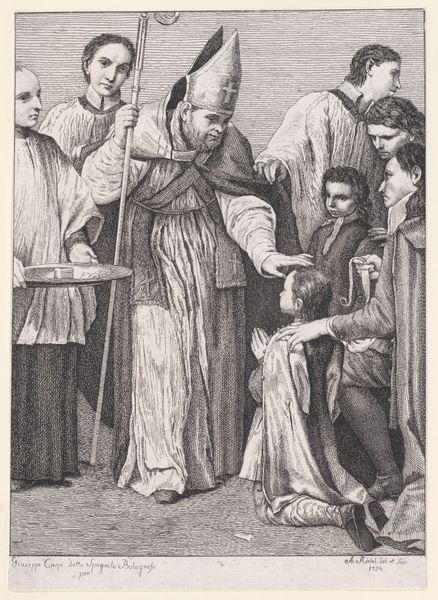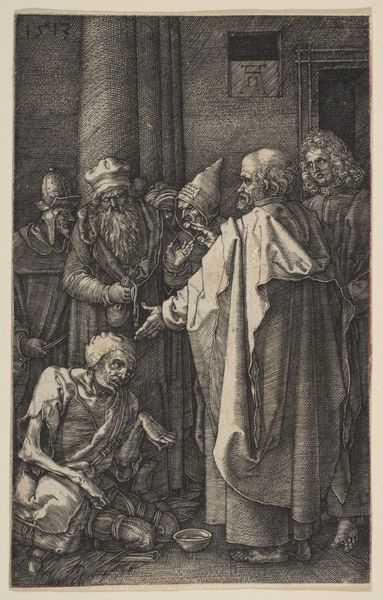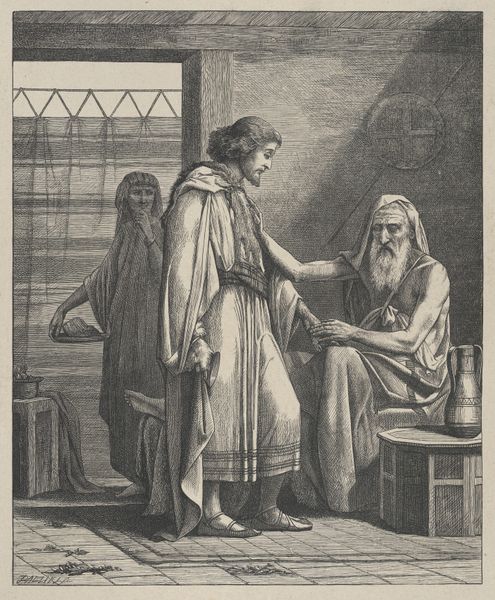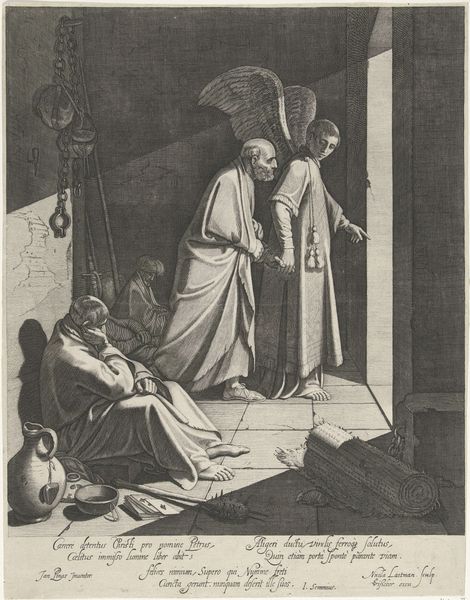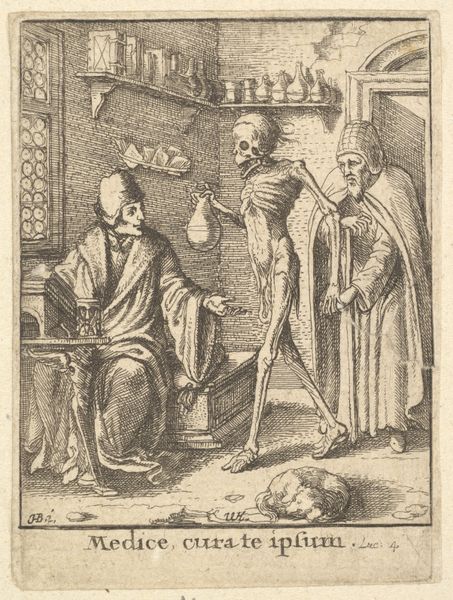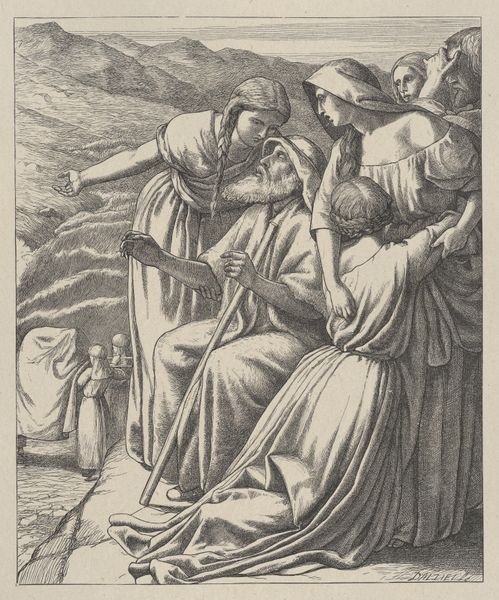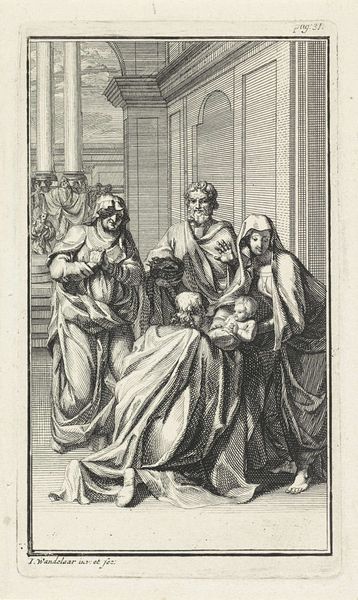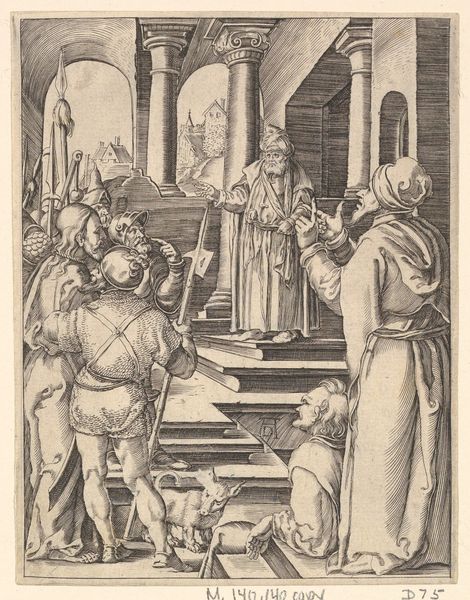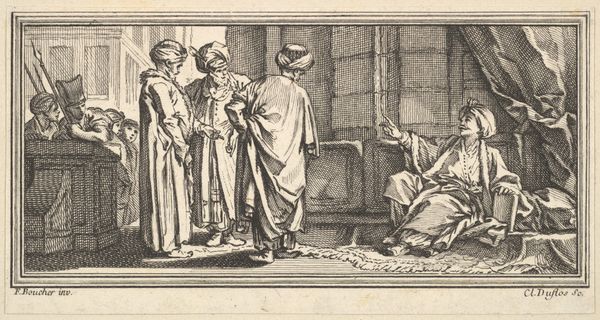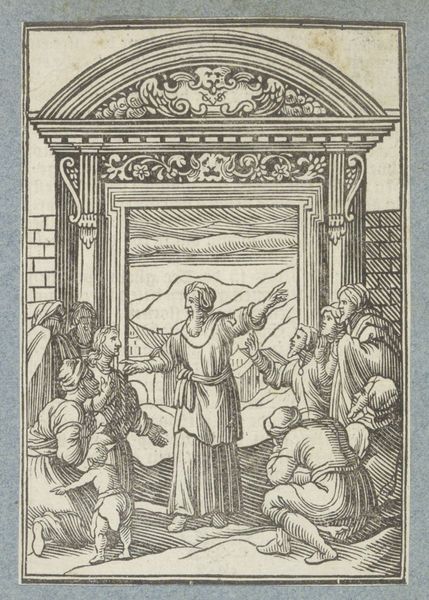
print, engraving
#
baroque
# print
#
figuration
#
line
#
history-painting
#
engraving
Dimensions: height 111 mm, width 81 mm
Copyright: Rijks Museum: Open Domain
Curator: Here at the Rijksmuseum, we have an engraving by Christoffel van Sichem II, dating from 1645 to 1646. The artwork is titled "Judit vermaant de bestuurders van Betulia" which translates to "Judith Admonishing the Governors of Bethulia". Editor: Immediately, I'm struck by the stark contrast created by the linear engraving style. The figures seem frozen in a moment of intense dialogue, all rendered in very fine lines. Curator: Precisely. This piece depicts Judith, a biblical figure, challenging the leaders of Bethulia. The narrative context is vital: Bethulia is under siege, and the governors are contemplating surrender. Judith, however, urges resistance, offering a daring plan to save her people. Editor: You can really see it in her posture, too. She’s leaning forward, engaged, while the governors seem much more stoic, almost hesitant. It definitely challenges established power dynamics— a woman intervening in political matters, and in such a direct manner. We can tie that into how female power has been rendered in art, specifically during the Baroque era. Curator: Exactly. Sichem created this print during a period marked by political and religious conflict, particularly the Thirty Years' War. It is likely to think this imagery acted as a mirror to contemporary ideas about leadership during the dutch golden age. Editor: Right, understanding the role of art in shaping and responding to socio-political climate. So in this case, Judith represents the will to resist, embodying feminine strength and a willingness to challenge male authority. We should look at Judith and ask: How do the power structures in Bethulia, reflect larger power structures? Curator: Absolutely, it raises crucial questions about how communities respond to crises and the roles that different voices play in shaping collective destiny. The success of this print surely relied upon how easily it transferred a well known tale to contemporary social questions about governance and war. Editor: A final thought - seeing Judith portrayed this way encourages questioning of traditional narratives that push female subjugation. It prompts the need for continuous assessment of the gender and power dynamics that continue to impact societies around the world today.
Comments
No comments
Be the first to comment and join the conversation on the ultimate creative platform.
